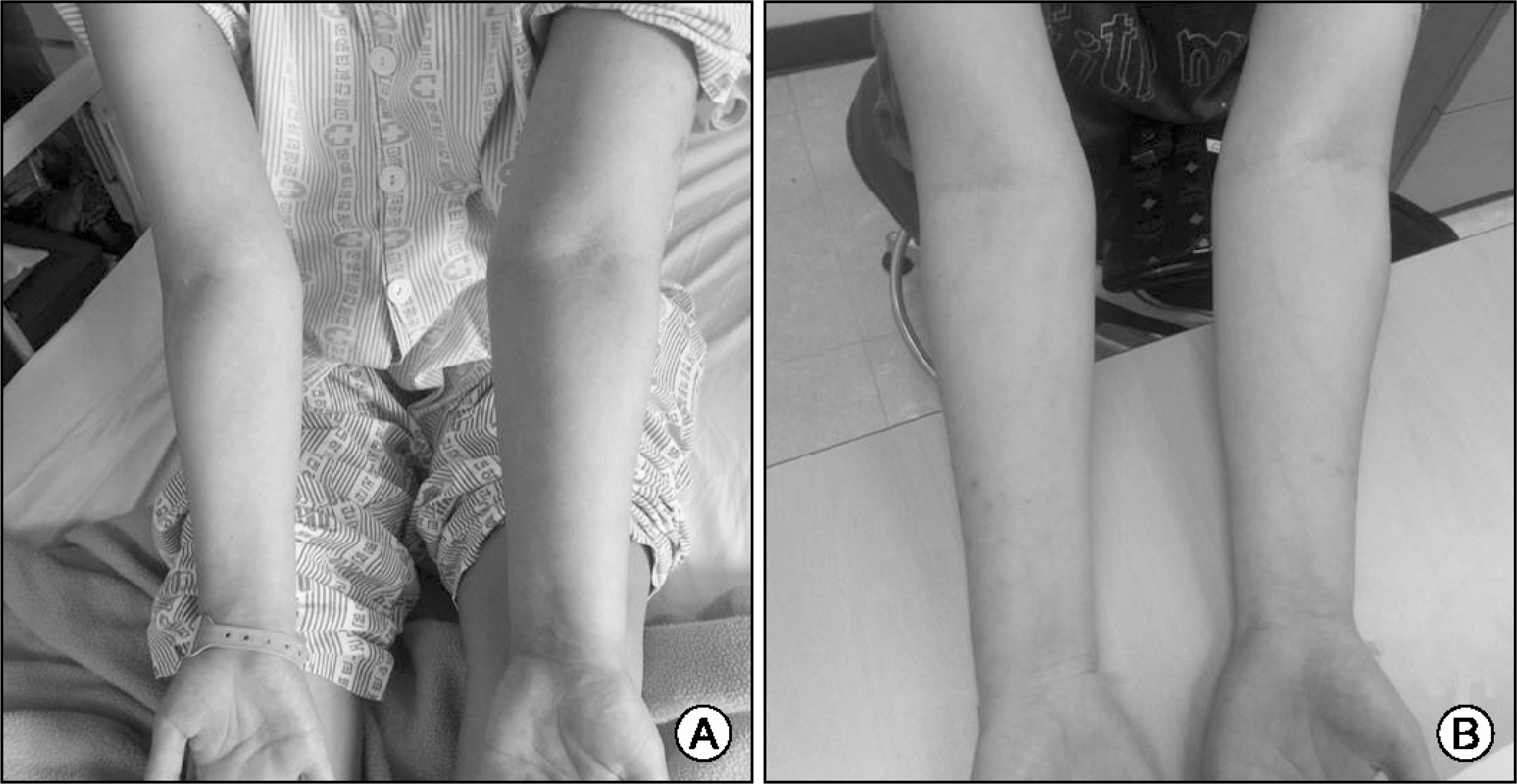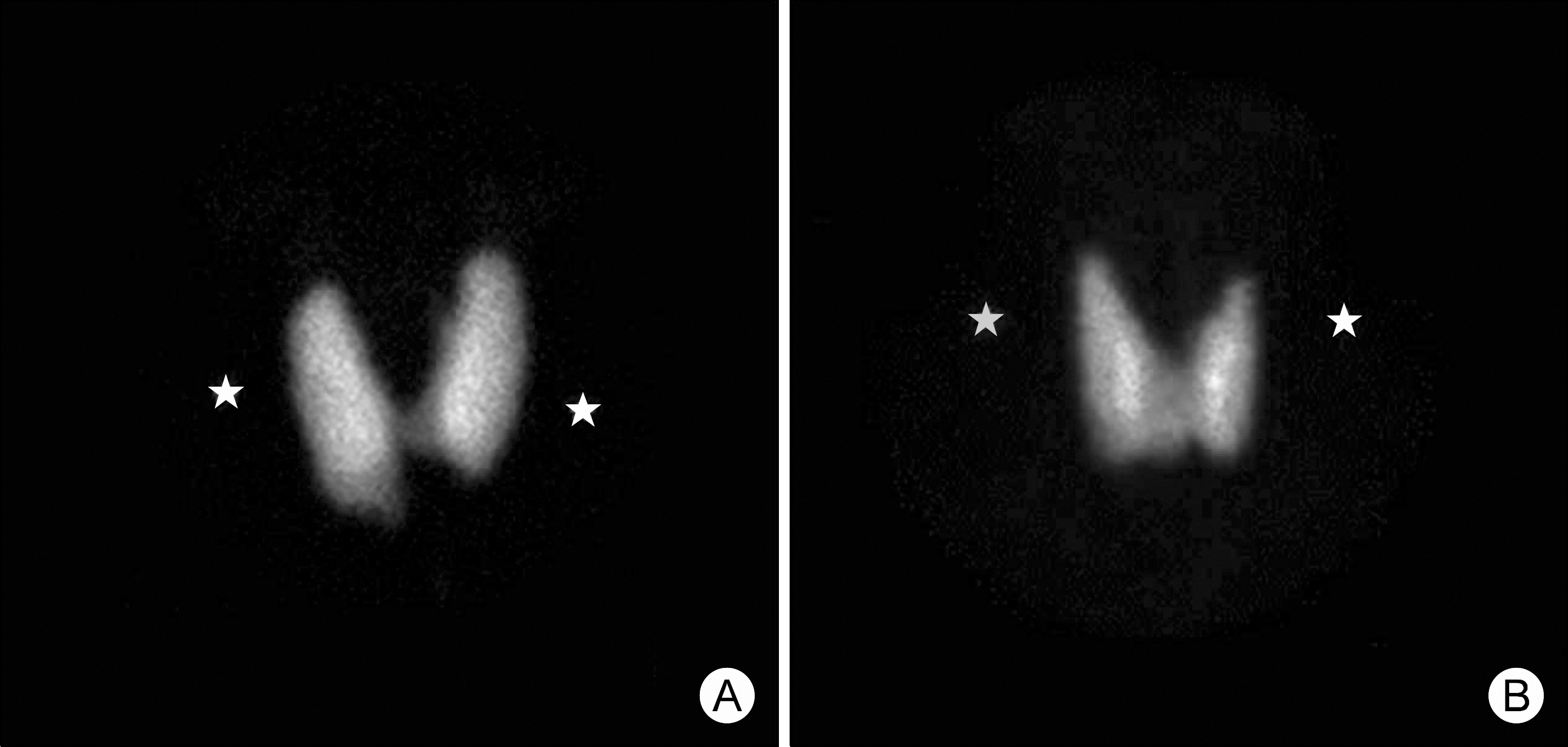Abstract
We describe here two Graves' patients who have presented with atypical symptoms. Interestingly, both of them had symptoms related to imbalance of body fluid homeostasis. Chief complaint of a 35-year-old woman (case 1) was the ipsilateral edema of upper body. A 33-year-old man (case 2) who had severe polyuria has referred from urology department with impression of diabetes insipidus. Both of them denied any typical symptoms of Graves' disease at presentation. These rare extrathyroid manifestations of Graves' disease were completely subsided after antithyroid drug treatment. We introduce their clinical courses and possible pathophysiological mechanisms of the atypical symptoms of Graves' disease.
References
1. Yi KH, Moon JH, Kim IJ, Bom HS, Lee J, Chung WY, et al. The diagnosis and management of hyperthyroidism consensus – report of the Korean Thyroid Association. J Korean Thyroid Assoc. 2013; 6(1):1–11.

2. Friedman IH. Edema as a presenting symptom of hyperthyroidism. N Y State J Med. 1965; 65:1798–801.
3. Volke V, Matjus S. Unilateral pitting edema of the leg as a manifestation of Graves' disease: a case report. J Med Case Rep. 2012; 6:258.

4. Wang Y, Zhao L, Li F, Chen HX, Fang F, Peng YD. Unilateral gynecomastia and hypokalemic periodic paralysis as first manifestations of Graves' disease. Am J Med Sci. 2013; 345(6):504–6.

5. Davies TF. Trauma and pressure explain the clinical presentation of the Graves' disease triad. Thyroid. 2000; 10(8):629–30.

6. Rapoport B, Alsabeh R, Aftergood D, McLachlan SM. Elephantiasic pretibial myxedema: insight into and a hypothesis regarding the pathogenesis of the extrathyroidal manifestations of Graves' disease. Thyroid. 2000; 10(8):685–92.

7. Alsanea O, Clark OH. Treatment of Graves' disease: the advantages of surgery. Endocrinol Metab Clin North Am. 2000; 29(2):321–37.

8. Savino W, Dardenne M. Neuroendocrine control of thymus physiology. Endocr Rev. 2000; 21(4):412–43.

Fig. 1.
Left dominant ipsila-teral edema of upper ex-tremity (case 1) at presen-tation (A), after 6 months antithyroid drug treatment (B).

Fig. 2.
Computed tomography of the case 1. Initial CT scans (A) showed diffuse increased soft tissue density in anterior mediastinum (A. long arrows), multiple lymph node enlargement in left axillary (A. short arrow) and ipsilateral edema in upper trunk (B). Follow-up CT scans after 6 months antithyroid drug treatment showed significantly decreased extent of soft tissue density in anterior mediastinum (C. long arrows), lymph node enlargement in left axillary (C. short arrow) and improved edema in upper trunk (D).





 PDF
PDF ePub
ePub Citation
Citation Print
Print



 XML Download
XML Download